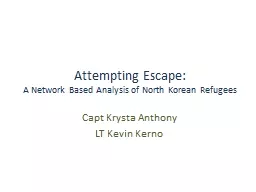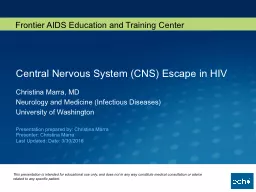PPT-Attempting Escape:
Author : pasty-toler | Published Date : 2015-09-23
A Network Based Analysis of North Korean Refugees Capt Krysta Anthony LT Kevin Kerno Historical Background History of North Korea Human r ights issues What is the
Presentation Embed Code
Download Presentation
Download Presentation The PPT/PDF document "Attempting Escape:" is the property of its rightful owner. Permission is granted to download and print the materials on this website for personal, non-commercial use only, and to display it on your personal computer provided you do not modify the materials and that you retain all copyright notices contained in the materials. By downloading content from our website, you accept the terms of this agreement.
Attempting Escape:: Transcript
Download Rules Of Document
"Attempting Escape:"The content belongs to its owner. You may download and print it for personal use, without modification, and keep all copyright notices. By downloading, you agree to these terms.
Related Documents














